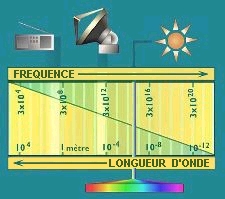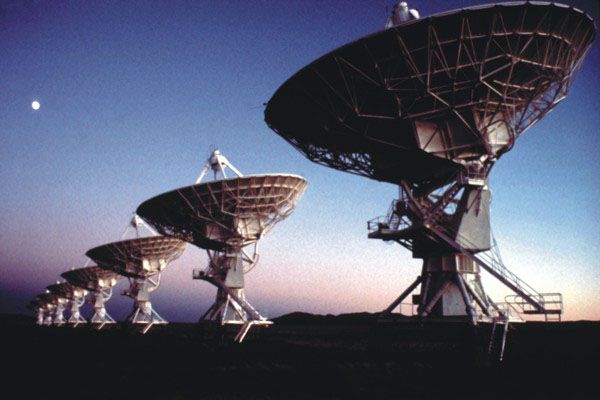It has been known since the discovery of Heinrich Hertz in 1887 that radio waves are of the same nature as light waves. In particular they propagate in a vacuum in a straight line (geodesic) at a constant speed of 299792.45 km / s. It is by their wavelength (or their frequency) that the hertzian waves are distinguished from the light waves.
When we speak of “light” we have become accustomed to attaching ourselves to the vision of the universe limited to the visible spectrum between 380 and 780 nm (from blue to red). This is only an octave and defines our visual ability, the extent of our detection spectrum. Radio astronomy allows us to detect much longer wavelengths, ranging from millimeter waves, expressed in gigahertz, to the HF waves, expressed in megahertz; the equivalent of a gain of more than 50 octaves.

With the invention of the radio, Thomas Edison was probably the first to recognize the possibility of listening to the signals emitted by the stars. Professor A.Kennelly, a partner of Edison suggested in 1890 an experiment going in this direction. In a letter to an astronomer at the Lick Observatory, he proposed: “Simultaneously with the electromagnetic disturbances that come to us from the Sun, and that we perceive, as you know, in the form of light and heat, disturbances on Larger wavelengths are perfectly plausible – if that were so, we could convert them to sound. ” Although his experience was not conclusive, his project would give rise to an astonishing innovation, radioastronomy.
Historically, it was Karl Jansky [9], engineer of the company Bell Telephone who managed in 1930 to intercept the first emissions from the universe, where apparently there was no source of visible radiation. Subsequently, more sensitive sensors with better resolution were developed, giving rise to a whole generation of radio telescopes. They made it possible to locate the points of origin of this radiation which were called “radiosources”. Among these we find pulsars and quasars.
All the bodies producing radiation are detectable by a radio telescope: they can be parasites generated by a generator of current, a motor, a switch, the discharge of a neon, the emissions of an artificial satellite, just like the natural emission of the atoms of a gas cloud, a planet or the stars of a galaxy.

Hello Friday
Hello
heo
hello
hi
gtry
Hahahs
bbb
hi
jo